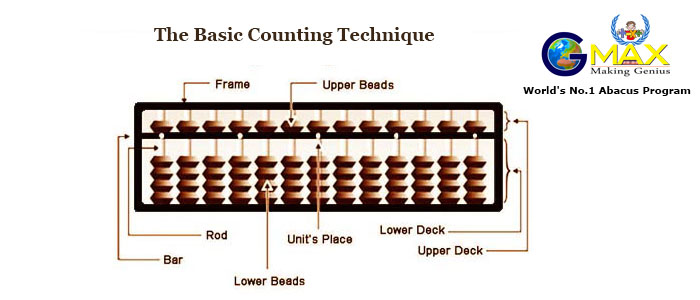How to Use an Abacus : The Basic Counting Technique

Hey folks, it’s nice meeting you all in another wonderful article. Knowing how to use an abacus effectively and the basics on counting is important to manipulate the difficult calculations. In this article, you are going to learn the process in detail.
How to Use an Abacus: The basics
Proceed below to know the basic counting process on abacus and how to use it effectively for the perfect calculation. If you follow the calculation perfectly and if you succeed from the small age, you will be able to manage any critical situation of calculation and problems with ease.
- Incline The Abacus in the right position
The first step on basic is that you need to incline the abacus in the right way. Have you ever seen a abacus? A abacus consist of rows and columns, the beads on the two rows will be arranged in these columns.
Every column in the top row should consist of one or two beads in each of the row, similarly each column in the down row will have four beads within them. So when you start to count, you can see all the beads at the top of the row and also in the bottom row.
Do you know the meaning of this, it means the beads in the top row will represent value 5 and the row at down will have the value one. One you are clear with this step, we can move to the abacus functions. If you need to perform any of the complex operations, you have to assign various values to the down row beads.
- Allocate a Value for Each Column
And another important thing is that the top row with beads need to be five times the real value of the beads at the bottom row, this is the way how abacus work for basics. Now you need to assign one of the each columns to the place value to make it count.
While you take a modern calculator, each beads in the column will represent the value which can be build as the numerical. Now the right column will be counted from ones ie from one to nine. The second will be the tens which is from ten to ninety nine and the third one are the hundreds which is between hundred and nine hundred and ninety nine.
Now if you are clear about the calculation, the next step is to assign the decimal place , which you will be tracking it. For eg: 21, 543.76, here the 6 will be placed in the first column, 7 in the second, 3 in third and so on. While performing this calculation it’s important you remember the decimal place, how it’s placed and then mark it on the abacus, you can also leave the row to be stable and go to the next value.
- Start the Counting Process
After you are clear about the above steps and calculations, now you need to start counting the beads, if you need to count a digit, you have to push a bead from the down row in the first column on the right to the up position and then “two” by pushing two, “three” by pushing three and so on.
Now the last step is to complete the calculation successfully. Now you will have four breads on the down row and now you need to move from “four” to “five. What should you do? You need to push the beads which is present on the top row down and then you need to push the four beads from the bottom row down. Now the correct reading is represented in the abacus as “Five”.
- Finish the ⅘ Exchange
Now, to count six, you need to push one bead from the down row upper and now the bead which is present in the upper row is down and one from bottom goes up. This is also called as ⅘ exchange.
The same process has to be repeated for the same in abacus. If you need to move from “nine”, then the beads which are present in “one’s” place should be pushed up and then the bead in the top row must be pushed down to “ten”, and therefore the single bead from the down row of “ten’s” place is pushed upper by one place.
The important thing you need to have in the mind is the calculation of the beads, if you miss a single bead then your calculation will go completely wrong. So concentration is much important when doing mind calculation with this abacus.
Final Words
Hope the above technique helped you to learn the basic counting in Abacus. If you have any queries, feel free to share your questions with us through the comment section below.
About Author:
Sivakami San is a SEO Analyst and a raising content writer with a strong passion for 2 years. She is content writer for GMAX, is a world-class abacus training for kids in India. Sivakami writes various niche blogs for various fields like SEO, Technology, Education, Health and so on. You can follow her on LinkedIn.




